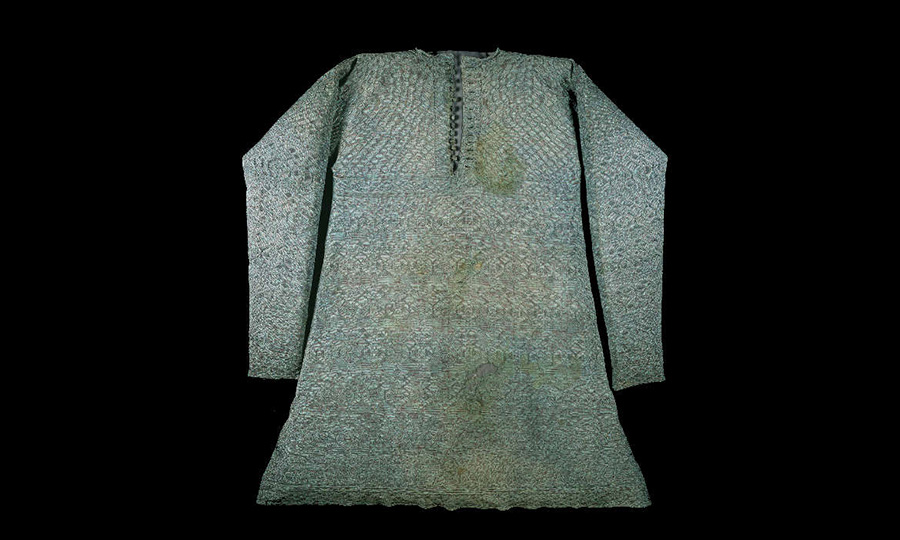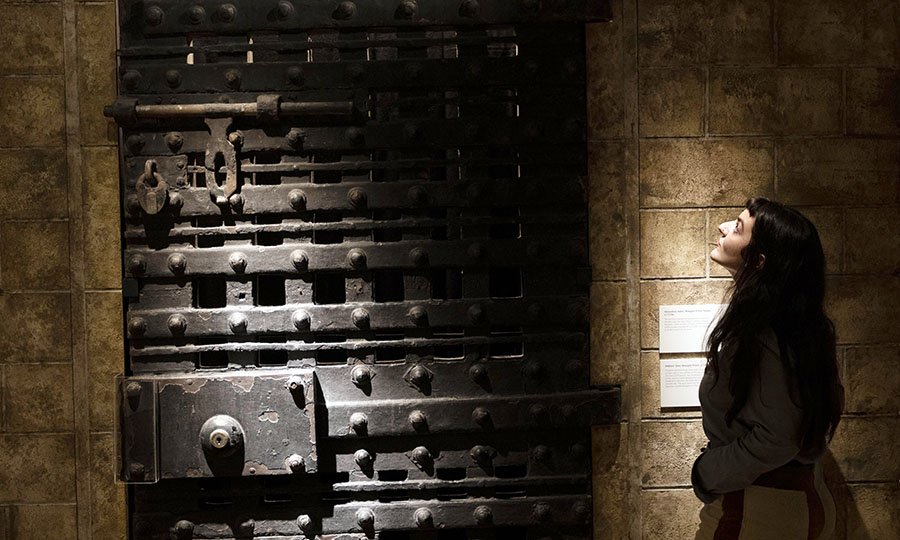Five reasons to visit the Executions exhibition
The Museum of London Docklands exhibition Executions explores how public executions were an undeniable feature of city life for over 700 years. Many of the objects have rarely been on public display. Here are five reasons why you can’t miss it.
King Charles I’s execution vest
This vest is said to have been worn by King Charles I when he was executed for treason in January 1649, which is the first and only time an English monarch has been tried and executed. This vest is made from a finely knitted silk and is a luxurious item fit for a king. It is one of several garments on display in the exhibition, including a handkerchief, gloves, a sash, and fragments from a cloak, all of which were reputedly worn by the King at his execution.
The debtors’ door of Newgate Prison
This heavy ironclad oak door was taken from the front of Newgate Prison when it was demolished in 1902. The debtors’ door (named because it originally led into the part of the prison that held debtors) was the last door that the condemned would pass through on their way to the scaffold. Upon passing through the door, they would see the often thousands of people who had crowded to witness their execution. The door was in use from the first public execution outside Newgate in 1783 until the last in 1868.
A 300-year-old bed sheet embroidered with human hair
Some of the objects on display remind us of the personal cost of executions, such as a bedsheet which was intricately decorated and painstakingly embroidered by Anna Maria Radclyffe in memory of her husband, the 26-year-old Earl of Derwentwater. The hair used may have been her own or her husband’s, or possibly both, as analysis indicates both a fairer and darker hair being used. It reads: “The sheet off my dear, dear Lord’s bed in the wretched Tower of London, February 1716, Ann C of Derwent-Waters”.
“Museum of London Docklands' latest exhibition offers a sensitive, sobering look at London's public executions... This is one of the best exhibitions yet staged in a museum with a reputation for putting on good shows.”
Londonist
The gibbet cage
Gibbetting was used to display the executed bodies and was an additional punishment for crimes including highway robbery, piracy, smuggling and murder. Many gibbets were located along the Thames River bank as a warning to those who partook in piracy and others were placed in the outskirts of London, including Hounslow Heath and Wimbledon Common. The gibbet cage on display at the museum is a reusable example, meaning it could be adjusted to accommodate different sized bodies.
The free audio tour
This audio tour takes you deeper into the stories behind each chapter of the exhibition, exploring one object or theme in each, including Elizabeth Fry's bonnet, gibbets and 'broadsides'. Execution broadsides were newspaper-style street literature about the accused criminals, their alleged crimes and the details of their execution. Beware: broadside writers didn’t exactly hold themselves to editorial standards, as they were often sensationally written – but they do provide for a compelling listen. Listen to the free audio tour.









